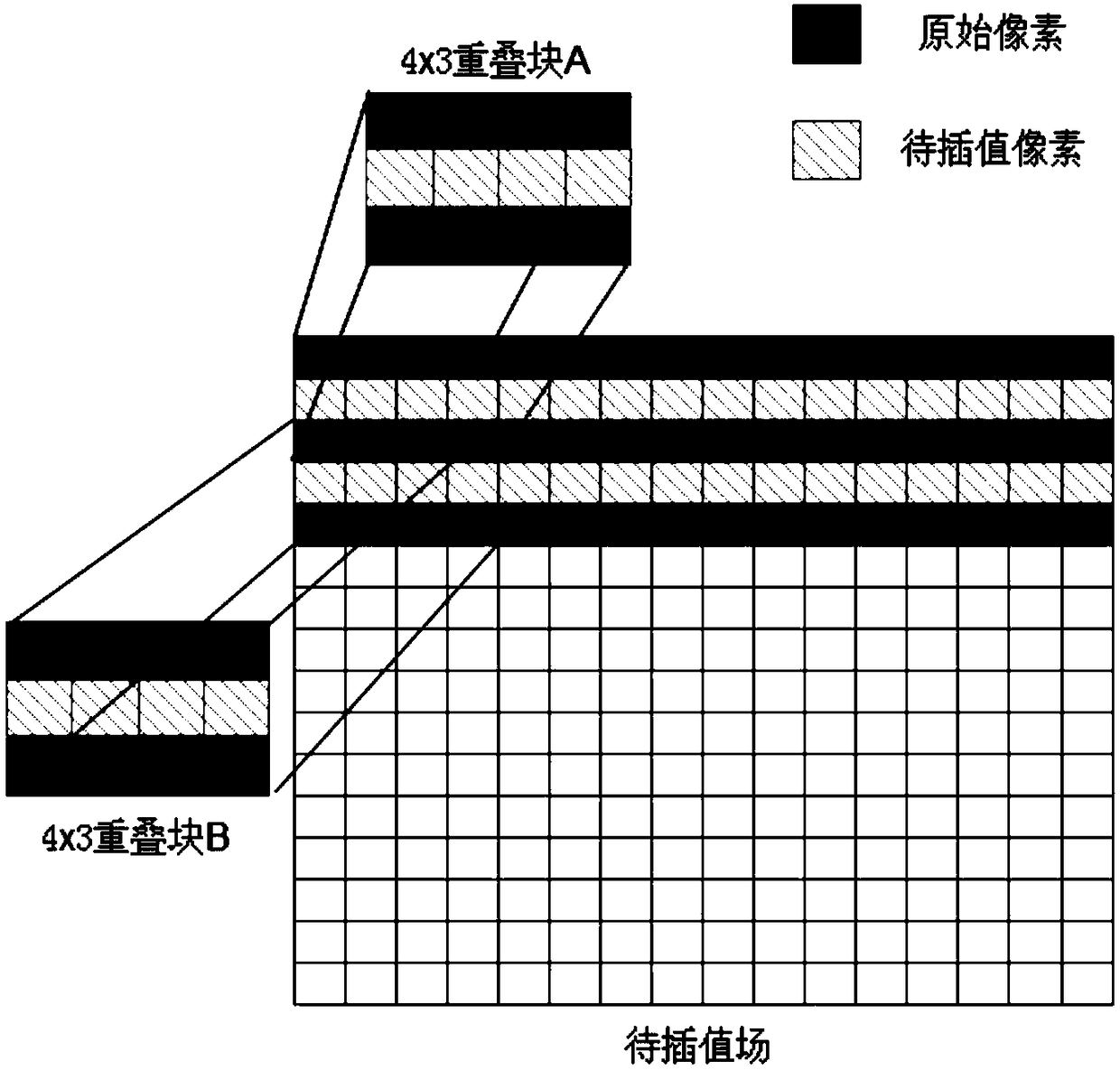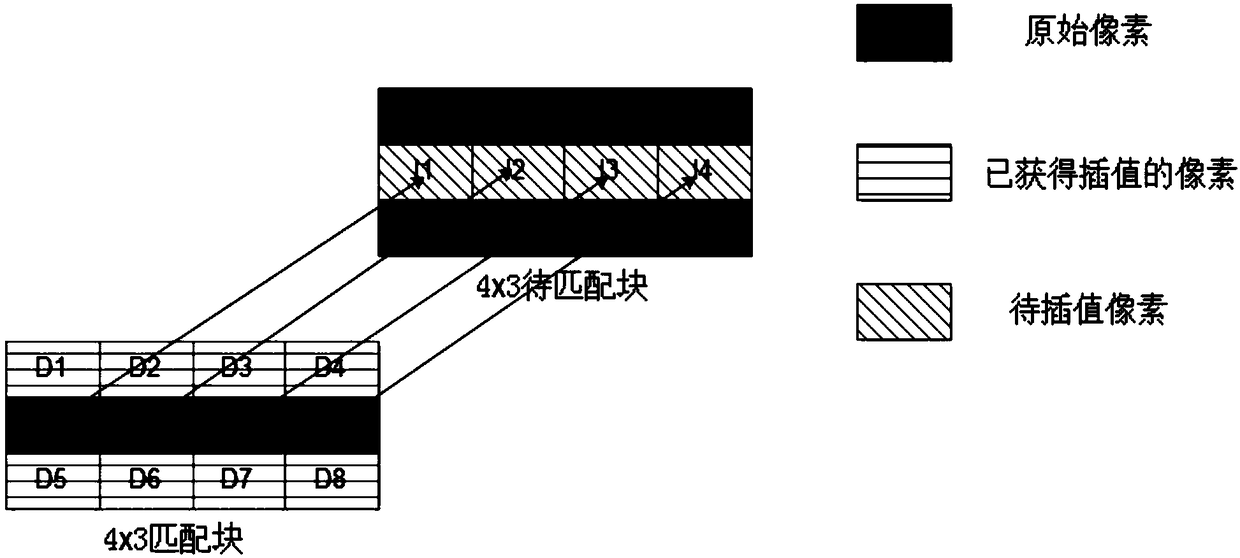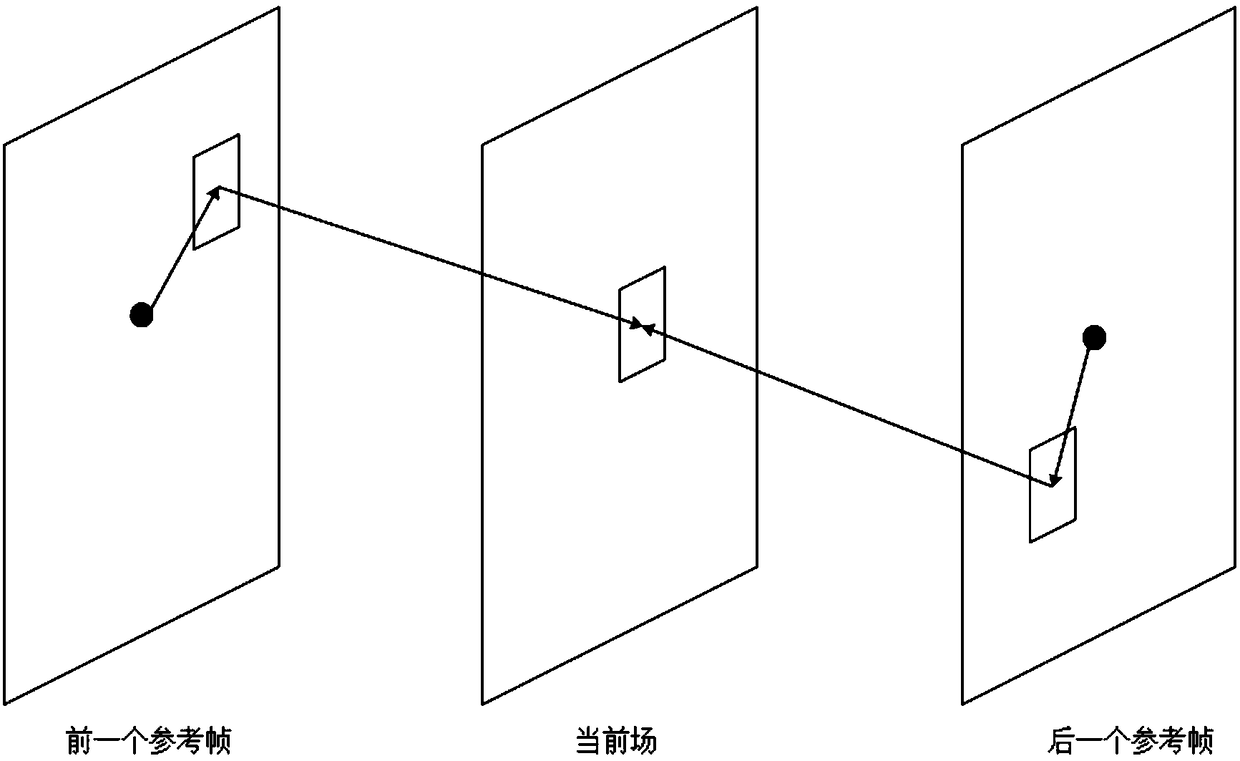A Bidirectional Motion Estimation Deinterlacing Method
A two-way motion estimation and de-interlacing technology, applied in the field of de-interlacing, achieves the effect of improving interpolation accuracy and reducing data volume
- Summary
- Abstract
- Description
- Claims
- Application Information
AI Technical Summary
Problems solved by technology
Method used
Image
Examples
Embodiment approach
[0048] 1. For the first field of the interlaced scanning video sequence, the line average interpolation algorithm is used for interpolation to obtain the reconstructed image, and a field to be interpolated and two reference frames are selected, wherein the reference frame is the previous frame adjacent to the field to be interpolated in time. One reconstructed image and the latter reconstructed image, the latter reconstructed image is firstly interpolated using the row averaging algorithm. The calculation expression of the row average algorithm is as follows, where I LA (i,j) is the interpolation obtained by using the row average algorithm, I(i-1,j) is the pixel value of the previous row adjacent to the point to be interpolated, and I(i+1,j) is the pixel value adjacent to the point to be interpolated The next row of pixel values.
[0049] I LA (i,j)=[I(i-1,j)+I(i+1,j)]÷2 (2)
[0050] 2. Select the block to be matched from the field to be interpolated. The size of the block ...
PUM
 Login to View More
Login to View More Abstract
Description
Claims
Application Information
 Login to View More
Login to View More - R&D
- Intellectual Property
- Life Sciences
- Materials
- Tech Scout
- Unparalleled Data Quality
- Higher Quality Content
- 60% Fewer Hallucinations
Browse by: Latest US Patents, China's latest patents, Technical Efficacy Thesaurus, Application Domain, Technology Topic, Popular Technical Reports.
© 2025 PatSnap. All rights reserved.Legal|Privacy policy|Modern Slavery Act Transparency Statement|Sitemap|About US| Contact US: help@patsnap.com



